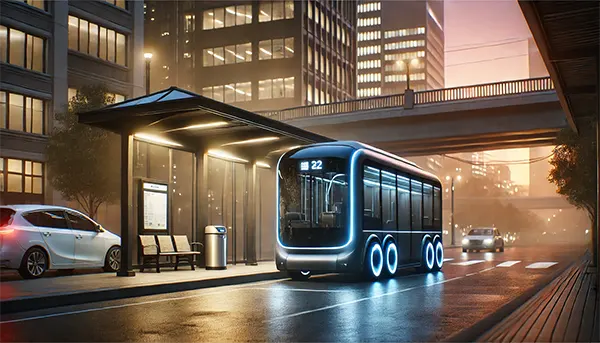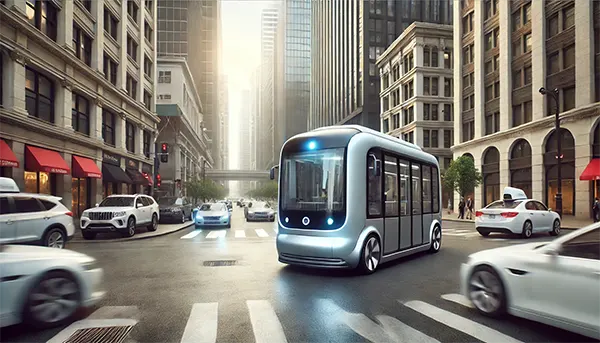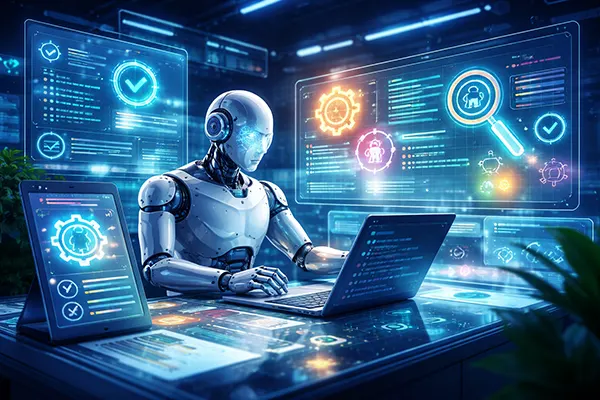
City Autonomous Buses: The Future of Urban Transportation
The transportation industry is on the cusp of a revolution, with city autonomous buses standing at the forefront of this transformation. These self-driving vehicles promise to reshape how urban areas approach public transportation, potentially offering faster, safer, and more efficient options. As we step into 2025, autonomous buses are not just a theoretical concept; they are being tested and deployed in various cities around the world. This article will explore the development, benefits, challenges, and future of autonomous city buses.
What Are City Autonomous Buses?
City autonomous buses are self-driving vehicles designed for public transportation within urban areas. These buses use a combination of advanced technologies, including artificial intelligence (AI), sensors, cameras, and GPS, to navigate streets without human intervention. The primary goal of autonomous buses is to improve public transportation efficiency while reducing the reliance on human drivers. These vehicles are built to follow designated routes, adjust to traffic conditions, and ensure passenger safety.
The concept of autonomous buses goes beyond simply having a bus without a driver; it encompasses the entire infrastructure and ecosystem required to support these vehicles. For instance, city planners need to rethink road layouts, traffic signals, and parking areas to accommodate the new technology. Autonomous buses are equipped with real-time data-sharing capabilities, enabling them to communicate with other vehicles and traffic management systems to optimize routes and avoid delays. This is just one of the many technological advancements that make these buses viable for large-scale implementation.
Technologies Behind Autonomous Buses
Autonomous buses rely heavily on several cutting-edge technologies that enable them to operate safely and efficiently. AI systems process data from onboard sensors such as LIDAR, radar, and cameras to understand the environment around the bus. These sensors detect obstacles, track pedestrians, and identify road signs, ensuring that the bus can navigate without human input. Additionally, GPS systems and advanced algorithms help the bus stay on its designated route, avoiding potential hazards.
These buses are also designed to learn from their environment. Machine learning algorithms enable autonomous buses to adapt to new situations based on their previous experiences. As a result, they become more efficient in handling various traffic scenarios. This level of adaptability is crucial for the future of public transportation, as urban environments are constantly evolving. The combination of AI, sensors, and machine learning ensures that autonomous buses can operate safely and effectively, even in complex urban settings.
Benefits of City Autonomous Buses
The introduction of autonomous buses into urban transportation networks offers numerous benefits, both to cities and their residents. These buses can potentially reduce traffic congestion, lower emissions, and provide more frequent service, especially during off-peak hours when human drivers might not be as readily available.
One of the key advantages of autonomous buses is their ability to operate more efficiently than traditional buses. By relying on AI to optimize routes, these buses can avoid traffic congestion, reduce travel times, and provide a smoother journey for passengers. Furthermore, autonomous buses are often electric, which makes them more environmentally friendly compared to their diesel-powered counterparts. This shift toward electric buses aligns with global efforts to reduce greenhouse gas emissions and combat climate change.
Reduced Traffic Congestion and Pollution
One of the most significant advantages of autonomous buses is their potential to reduce traffic congestion. With advanced AI systems, these buses can optimize their routes to avoid traffic jams, ensuring a smoother journey for passengers. Additionally, many autonomous buses are electric, contributing to a significant reduction in urban pollution levels. The transition from traditional fuel-powered buses to electric autonomous models is expected to have a profound impact on city air quality.
The ability to reduce traffic congestion is particularly important in densely populated cities where roads are often overcrowded. Autonomous buses can operate in a way that reduces the number of vehicles on the road, as they can be scheduled to run more frequently and more efficiently than conventional buses. With the potential for fewer cars on the streets, cities will experience less traffic and shorter commute times for all road users, including pedestrians and cyclists.

The Challenges Facing Autonomous Bus Implementation
Despite their many advantages, the widespread implementation of autonomous buses faces several challenges. One of the primary concerns is safety. While the technology has advanced significantly, there is still some apprehension about the ability of autonomous buses to handle complex traffic situations, such as pedestrians crossing at unexpected moments or navigating through crowded urban environments.
Another major challenge is the infrastructure required to support autonomous buses. These vehicles rely on high-speed internet connections and advanced traffic management systems to operate effectively. For cities to fully embrace autonomous buses, they must invest in the necessary infrastructure, including dedicated lanes, charging stations, and real-time traffic data integration. Moreover, these buses need to be designed to work seamlessly with traditional modes of transportation, such as regular buses, trains, and taxis.
Regulatory and Public Acceptance Issues
In addition to safety concerns, there are regulatory hurdles that must be overcome before autonomous buses can become a common sight in cities. Governments and city planners need to develop new laws and regulations to accommodate these vehicles, including new traffic rules and safety standards. Public acceptance is another major challenge. Many residents may be hesitant to trust self-driving buses, particularly in densely populated areas. Public education campaigns will be essential to help overcome these concerns.
Public perception will play a significant role in determining the success of autonomous buses. It is crucial for city authorities and developers to demonstrate the safety and reliability of these vehicles through testing, pilot programs, and transparency. Engaging with the public, offering opportunities for community feedback, and addressing concerns directly will help foster trust in this new mode of transportation. Without widespread public support, the adoption of autonomous buses could be slow, limiting their potential benefits.
As we move into 2025, autonomous buses represent a promising solution to the challenges of urban transportation. While there are still obstacles to overcome, the benefits of these vehicles make them a key component of the future of city transport.





